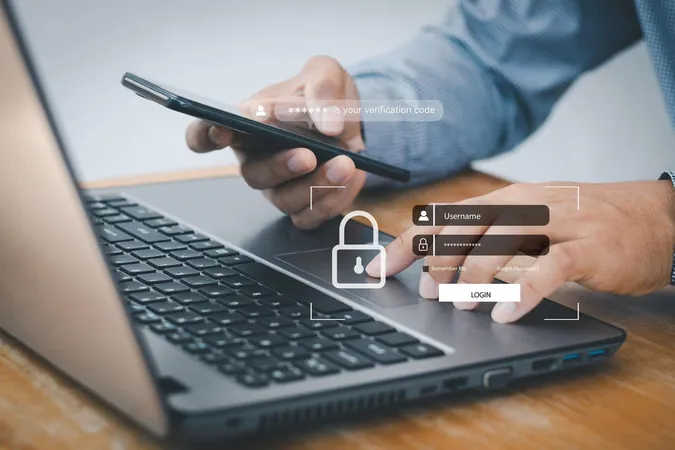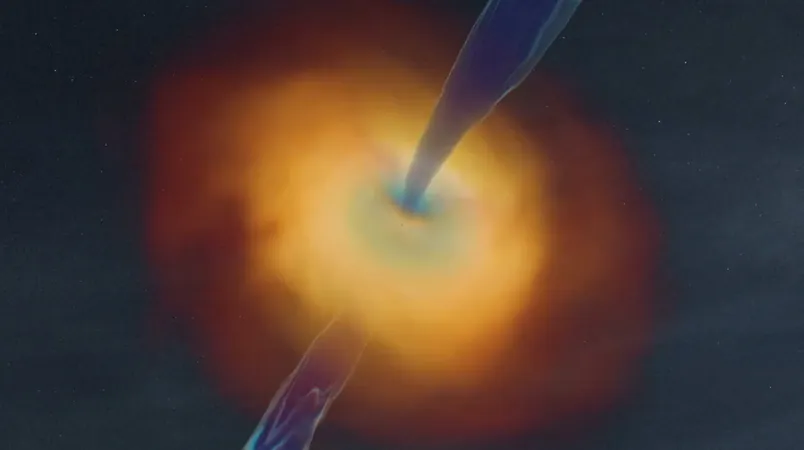
WARNING: Two-Step Phishing Attacks Evolve—What You Need to Know to Stay Safe!
2024-11-18
Author: Emily
November 18, 2024: In a stunning update to yesterday’s report, cybersecurity experts confirmed a new and concerning trend in the world of cyber attacks: the rise of sophisticated two-step phishing schemes using Microsoft Visio files. These tactics are threatening users and organizations worldwide, and it is essential that you remain vigilant.
As cybercriminals continuously refine their methodologies, security professionals stress the importance of layered defense strategies. Your cyber safety and the protection of sensitive information hinge on understanding these threats. According to leading researchers at Perception Point, two-step phishing attacks have emerged as a prevalent strategy among cybercriminals, using familiar platforms to deliver malicious content in a way that is challenging to detect.
One alarming technique discussed is the use of Microsoft Visio .vsdx files to execute these attacks. Commonly utilized in many workplaces, Visio files exploit a sense of “harmless familiarity” that makes them particularly dangerous. Unsuspecting victims might trust such files, potentially leading them directly into the cyber trap laid by attackers.
What Happens When You Click?
Upon clicking an embedded link in the email, victims may find themselves directed to a compromised Microsoft SharePoint page housing a .vsdx Visio file. Once there, they may be led further down the rabbit hole, as clicking a seemingly benign “view document” button can redirect them to yet another page—one crafted to mimic a Microsoft 365 login screen, poised to capture sensitive login credentials.
Beware the Ctrl Key!
A unique twist in these attacks instructs victims to hold down the Ctrl key while clicking links. This simple yet effective maneuver helps attackers evade email security mechanisms, which often fail to recognize such human interactions as indicators of malicious behavior.
To enhance your security, always enable two-factor authentication (2FA) for vital accounts. This additional layer of protection can thwart attackers even if they manage to capture user credentials.
SVG Attachments: A New Threat Dimension
Additionally, experts are shedding light on another concerning tactic involving scalable vector graphics (SVG) attachments used in phishing attacks. SVG files, which are often overlooked by security software due to their unique composition, can unravel malicious designs to trick victims into inputting personal information. Cybercriminals can embed login forms within these SVGs, leading to devastating outcomes—especially if the recipient does not realize the inherent risks these files pose.
Security researcher Lawrence Abrams from Bleeping Computer has highlighted how SVG attachments appear innocuous yet can execute harmful scripts that redirect users to phishing sites.
Stay Proactive and Question Everything!
In a world where cyber threats are constantly evolving, it is crucial to cultivate a mindset of skepticism when dealing with emails and attachments. Always question the necessity of receiving SVG files; if they seem out of place or abnormal for your workflow, it’s best to treat them with caution.
Final Thoughts: Protect Yourself!
As new attack strategies develop, knowledge is your best defense. By understanding the mechanics behind these sophisticated two-step phishing attacks and remaining alert to their tactics, you can significantly decrease your chances of falling victim. Stay informed, stay cautious, and safeguard your digital life!









 Brasil (PT)
Brasil (PT)
 Canada (EN)
Canada (EN)
 Chile (ES)
Chile (ES)
 España (ES)
España (ES)
 France (FR)
France (FR)
 Hong Kong (EN)
Hong Kong (EN)
 Italia (IT)
Italia (IT)
 日本 (JA)
日本 (JA)
 Magyarország (HU)
Magyarország (HU)
 Norge (NO)
Norge (NO)
 Polska (PL)
Polska (PL)
 Schweiz (DE)
Schweiz (DE)
 Singapore (EN)
Singapore (EN)
 Sverige (SV)
Sverige (SV)
 Suomi (FI)
Suomi (FI)
 Türkiye (TR)
Türkiye (TR)